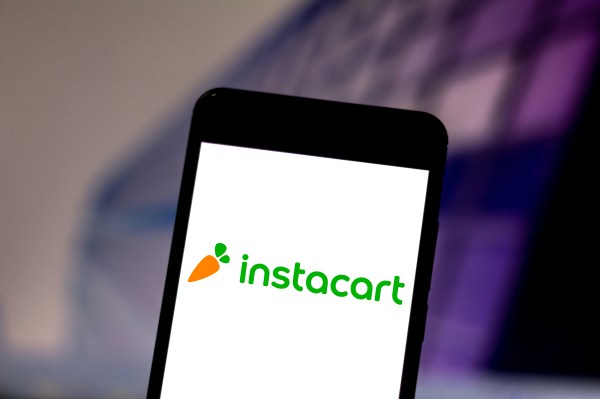British chip designer Arm’s Nasdaq IPO ended up valuing the company at $65.24 billion after its stock closed up 24.69% at $63.59 yesterday. We’d already expected the company to be worth more than you’d expect given the price range it initially set for the IPO, but yesterday’s performance was even higher than our relatively bullish take.
And that came after the company priced the listing at the top end of its $47 to $51 per share price range. Talk about market appetite for chip companies.
The Exchange explores startups, markets and money.
Read it every morning on TechCrunch+ or get The Exchange newsletter every Saturday.
Of course, a strong IPO is great news for Arm, since it shows that investors have confidence in its strategy. Talking to TechCrunch’s Frederic Lardinois shortly before trading started yesterday, Arm’s EVP and chief commercial officer, Will Abbey, said that the company is “going to continue to invest in the three areas of power efficiency, ultimate performance and an ecosystem.”
But in today’s climate, Arm’s IPO is more than a way for SoftBank to see some cash out of its investment. It’s somewhat of a bellwether of the times to come, and the optimistic among us may even say it marks the return of the IPO pop. Not everyone thinks IPO pops are a good thing, though; after all, they also suggest that the pricing wasn’t right in the first place.
 And Instacart certainly seems to have taken notes from Arm’s bull run: Earlier today, the grocery delivery company raised the proposed price range for its IPO to $28 to $30 per share, up from $26 to $28 per share.
And Instacart certainly seems to have taken notes from Arm’s bull run: Earlier today, the grocery delivery company raised the proposed price range for its IPO to $28 to $30 per share, up from $26 to $28 per share.
On one hand, raising an IPO’s proposed price range makes an IPO pop less likely. On the other, it shows confidence from a company, its stakeholders and bankers that the stock and resulting valuation will be received well when the company starts trading.
Arm and Instacart, however, are very different companies, and the level of enthusiasm for the future of grocery delivery isn’t exactly on par with the hype around AI and semiconductors. Could Instacart be making a mistake and aiming too high? Let’s find out.
Instacart’s numbers
Instacart’s IPO should put 22 million shares on sale — 14.1 million from Instacart itself and another 7.9 million from existing shareholders. At the top end of its new price range ($30), 22 million shares would fetch a total of $660 million and $572 million at the lower end.
If the IPO prices at the top end, Instacart would enjoy a fully diluted valuation of up to $10 billion, per Reuters.
Now, $10 billion is nothing to laugh at, but as you may recall, Instacart had previously enjoyed a peak valuation of $39 billion back in 2021.
Still, we knew that huge price tag was history: In March 2022, 409a price change (a third-party process, but noteworthy nonetheless) reset the company’s valuation to $24 billion, and a few months later, it was reduced to an estimated $15 billion, and once again to some $13 billion in October of that year.
For context, Instacart’s revenue rose 39% to $2.55 billion in 2022, up from $1.83 billion a year earlier. And if we annualize its H1 2023 revenue of $1.48 billion, we can expect the company to report revenue of about $2.95 billion for the full year, a 16% increase from 2022.
A valuation of about $10 billion would grant Instacart a multiple of 3.4 times its estimated 2023 revenue. That’s a fairly low multiple for a software company, but that’s okay in this case since Instacart’s revenue is more hybrid.
Instacart’s business
In its S-1, Instacart describes itself as a “grocery technology company.” But does that warrant a tech valuation?
Instacart’s profit sources look quite different from the average software company. Per its S-1, its revenue “consists of transaction revenue, primarily from fees paid on each order by retail partners and customers, as well as advertising and other revenue, primarily from advertising fees paid by brand partners.”
While the advertising market is recovering, that type of revenue just doesn’t warrant the same multiples as SaaS, for instance, and is inherently less stable. Grocery retail, too, is subject to macroeconomic variations.
From a growth perspective, however, Instacart does make a compelling argument that the “future of grocery” can mean big profits. In the words of its CEO, Fidji Simo, in the S-1’s opening letter:
Grocery is the largest retail category and represents a $1.1 trillion industry in the United States alone. But only 12% of grocery sales are made online today. As even more people shop online, online penetration could double or more over time.
Instacart’s growth in the first half of 2023 seems to confirm this potential. And while the company can’t claim the same AI tailwinds as Arm, its S-1 also gives multiple nods to the technology.
Many companies are citing AI as a tailwind, though, which is to be expected when hype is the name of the game. But it’s interesting how Instacart connects its use of AI to the current macroeconomic environment and inflationary pressures on family budgets. Instacart says it is leveraging AI “by showing customers targeted discounts based on past orders and highlighting more affordable options to price-conscious customers.” Presumably, this should help it weather the storm and make hay when the sun shines and consumers regain their purchasing power — whenever that might be.
It’s too early to tell how well Instacart’s IPO will do, but we already have a data point for demand. Indeed, the amended S-1 once again notes that Pepsi agreed to purchase $175 million of Instacart’s Series A redeemable convertible preferred stock. No matter if this IPO pops or not, we’ll be watching.
